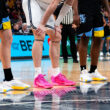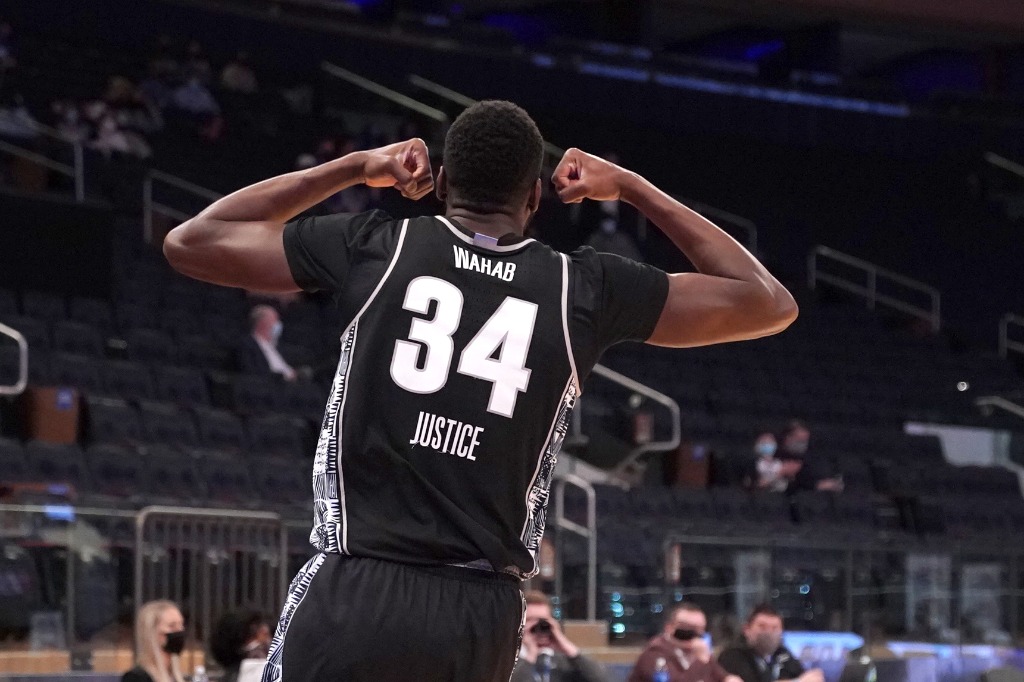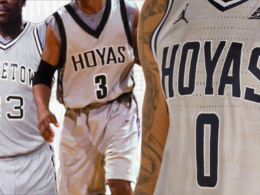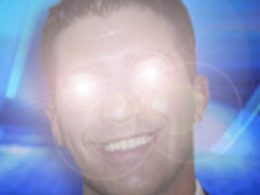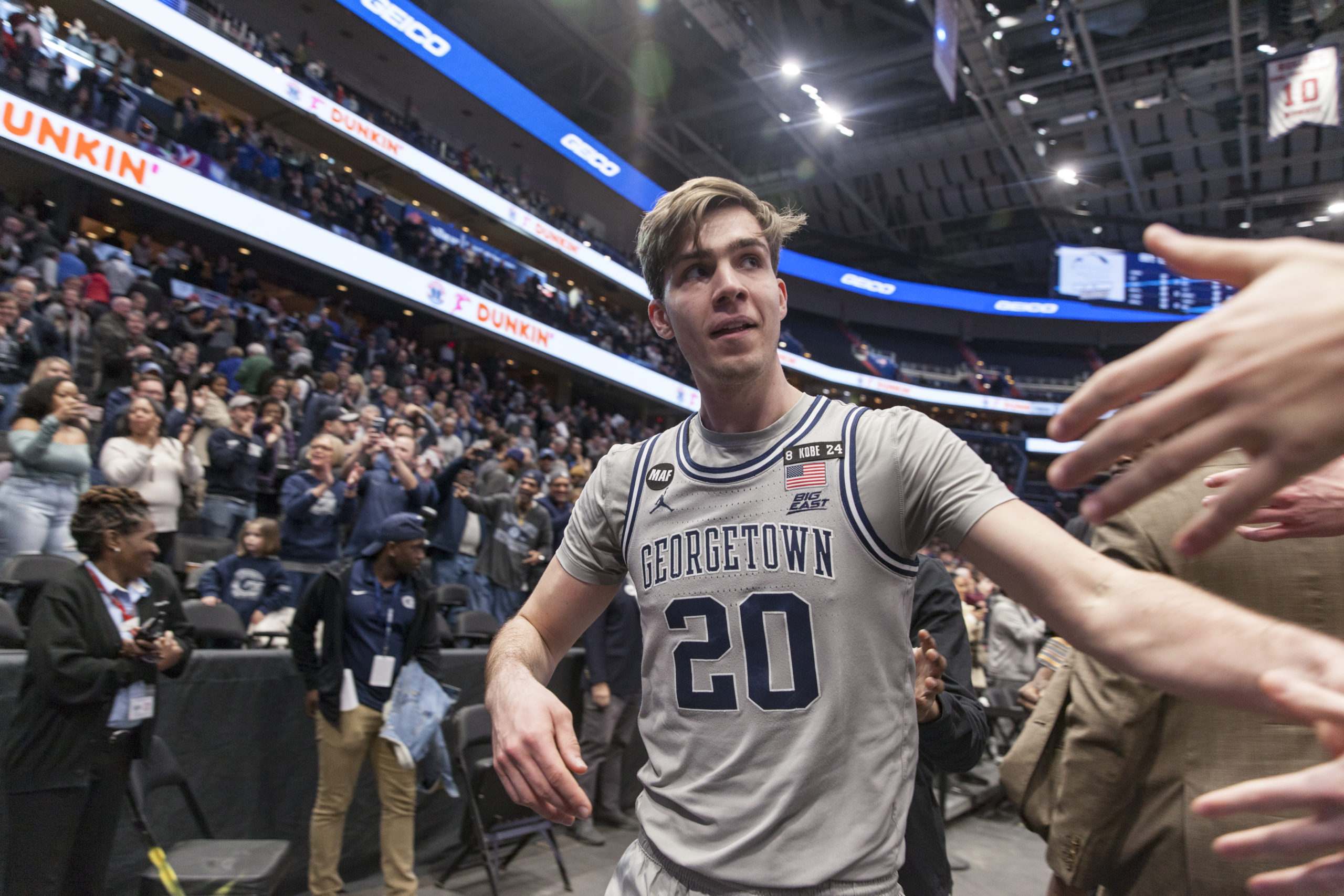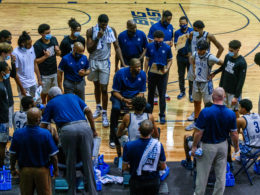In his first two years of collegiate basketball, Qudus Wahab developed into the focal point of the Georgetown Hoyas program. He helped the program break out of its downward trajectory and led the team to its first Big East Tournament title and NCAA Tournament berth since Patrick Ewing was hired as head coach. But after a disappointing loss to Colorado, Wahab announced his intentions to transfer away from the program, choosing the University of Maryland as his new home.
Naturally, Hoya fans thought they had seen the last of the 6 ’11 center from Lagos, Nigeria. However, 13 months after he made the move up to College Park, Georgetown broke the news that Wahab would be returning to the squad. The announcement was perhaps more shocking than his departure. Nonetheless, Hoya fans have welcomed Wahab back with open arms, and are ready to see him produce on the Hilltop again.
Initially, Wahab’s departure created serious concern for the strength of the Georgetown frontcourt the following season. These concerns proved to be valid. Last season, the Hoya center trio of Timothy Igohefe, Ryan Mutumbo, and Malcom Wilson combined for a staggering 12.9 points and 11.5 rebounds per game. Compare that to Wahab’s last season at Georgetown, where he alone averaged 12.7 points and 8.2 rebounds.
Without Wahab, the Hoyas also missed his reliable defensive presence. Perhaps the last time Hoya fans can look back and remember an exciting defensive performance was Qudus Wahab’s nine-block game, an effort that propelled the Hoyas to an exciting overtime win against St. Johns. This ability to affect games defensively was something the Hoyas lacked all of last year.
For the entirety of last season, the defense looked especially permeable, as seen by the 5.3 point jump in points allowed per game. The Georgetown center trio of Igohefe, Mutumbo, and Wilson often looked slow both in transition and help defense. They managed to block enough shots to protect the basket, but they simply got beat too often — not to mention, Tim Igohefe seemingly leading the nation in goaltends and fouls per game.
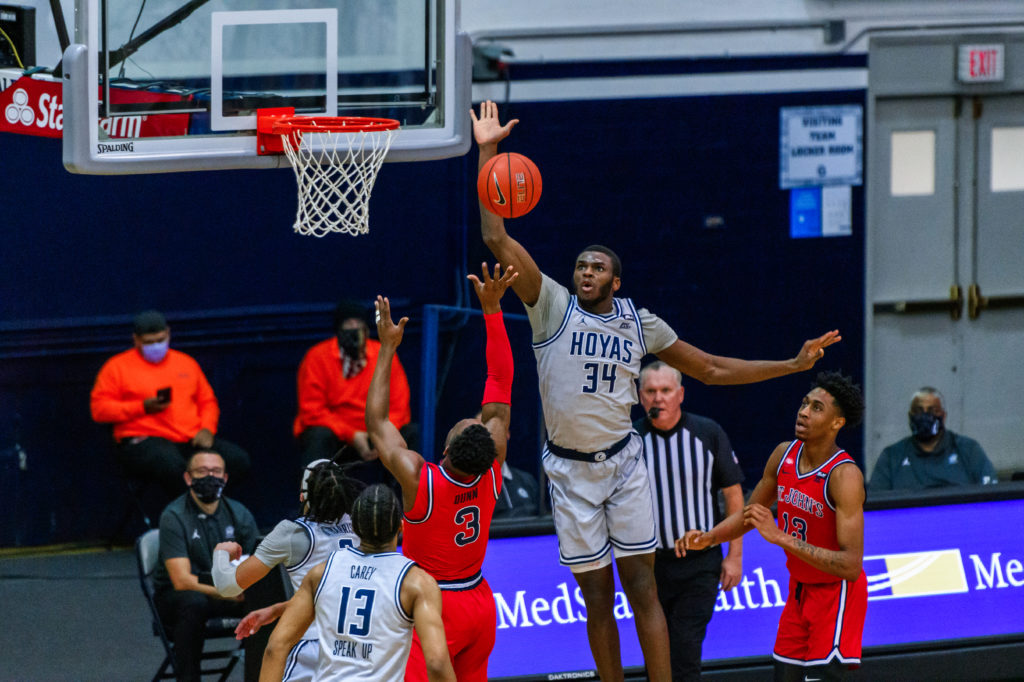
With Wahab returning, having a center that can consistently produce on both sides of the ball will undoubtedly make Patrick Ewing’s job easier. When asked about Wahab, Ewing asserted that his return addresses “a part of our team that we were lacking.” Coach couldn’t be more correct.
Wahab’s influence should be able to manifest in ways other than his offensive and defensive production–the Hoyas will look to Wahab as a leader. Sophomore Ryan Mutumbo should especially benefit from Wahab’s veteran presence. While Mutumbo showed flashes of potential last season, he struggled to find a consistent role in the rotation. This may be attributed to the lack of sufficient and stable positional leadership, with Timothy Igohefe not exactly cutting it.
In the past we have seen the importance of having such a mentor in the center position—Wahab himself played his freshman season under Omer Yurtseven, filling a supporting role in which he thrived. If Mutumbo can take on his development in a similar way, Hoya fans should be excited about the center position for the coming seasons.
The homecoming will be crucial for the Hoyas, but will also serve as a beneficial reset for Wahab. During his time at Maryland, Wahab did not play like the certified stud that he was on the Hilltop. In 32 games, he averaged 7.7 points and 5.6 rebounds, and a career low 55.9% from the field. The Terrapins season was also marked with turmoil after coach Mark Turgeon stepped down in December, leaving the job for Interim Head Coach Danny Manning. Under Manning, Maryland struggled in conference play, finishing tenth and missing the NCAA tournament. Returning to the Hoyas will afford Wahab an opportunity to return to his former self while playing under a coach with whom he has significant experience.
What remains to be seen is if Wahab can replicate or improve on his previous production as a Hoya with the completely new squad. Due to the significant turnover of Georgetown’s roster, junior guard Dante Harris is the only player Wahab has built chemistry with in the past. While the duo had great success two years ago, especially during the Big East Tournament run, things have changed. Not only has the team around them completely transformed, but after a disappointing Sophomore season and the arrival of promising Sophomore transfer Primo Spears, Dante Harris finds himself without a solidified starting spot.
Regardless of any question marks of production, having Qudus Wahab back at Georgetown for the 2022-2023 season holds immense importance for the Hoyas. On the defensive side, Wahab’s shot blocking ability will be crucial in a Big East conference that has become very deep at the center position. On offense, having a reliable presence down low should bring much needed organization to an offense that looked completely chaotic and confused last season. If Wahab can help fix these holes, the Georgetown Hoyas could be a scary team come conference play. After all, Hoya fans need some reminder of the magic we witnessed two seasons ago in Madison Square Garden. Perhaps Qudus Wahab will be just that.

